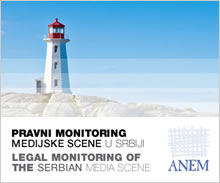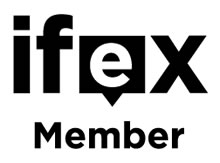13. 01. 2009
DIGITAL TV EVEN VIA OLD TELEVISION SETS
The EU has ceased producing old-type television sets, but they can still be used with the assistance of a set-top box.
Belgrade, January 13, 2009 (Politika) – It is the same old story even with digital television. We lack a stable legal framework in order to introduce it collectively. In that matter, Europe has left us far behind and now we would have to run at full speed in order to reach it. So far, we have not passed special laws which regulate the issue, and neither have we met the prerequisites to found digital terrestrial television, because the Law on Radio-Diffusion, and the Telecommunication Law mention them only sketchily.
Nevertheless, the PR councilor at the Republic Telecommunication Agency (Ratel), Aleksandra Stefanović, says that something has already been achieved: a cross-institutional workgroup has been formed, comprising the representatives of the Ministry of Telecommunications, the Ministry of Culture, the Serbian Radio-Diffusion Agency (RRA) and Ratel. The issue is highly serious, claims our interviewee, supporting her statement with the fact that Europe plans to completely cease analogue television on June 17, 2015, the decision having been reached at the Regional Radiocommunication Conference in Geneva in June 2006. What does that mean? In short: those who continue to broadcast analogue signals like Serbia so far, will neither be heard nor seen.
- We hope to be able to digitalize radio-diffusion in Serbia by 2012 – warns Aleksandra Stefenović.
If analogue and digital signals are compared in a technical sense, the latter utilize a broader frequency range, they are less sensitive to disturbances and have the bandwidth for programs broadcast by ever more stations. The latter technology is cheaper and allows requesting special content, such as films or delayed broadcasting, currently available to internet television viewers, for example. Some of the “digital services” are also electronic purchase, enriched teletext, electronic banking, video at request, distance learning and possible selection of sports or musical 24-hour programs.
- The gist of the digital signal is that information, which could be speech, audio, video or other data, can be transmitted or recorded in a discrete form (in the so-called discrete increments, and not continuously, which is the case with the analogue signal) and that it is represented by a series of binary impulses – “nils and ones” –a professor of television and multimedia at the Faculty of Electrical Engineering in Belgrade, Irini Reljin, PhD., attempted to explain this obviously not very simple system.
Most importantly, according to her, in the digital format, the information can be protected much more efficiently from unwanted disturbances and noise, which characterize all the media. Also, it is possible to send a large number of independent messages via the same channel.
The number of data received via a digitalized television signal is huge, and that is why it is necessary to decrease the number of data by the means of highly complex tools, i.e. the signal is compressed. There are several standards for video-signal compression, out of which two are currently used in television. Under the same working conditions, digitalization enables simultaneous broadcasting and reception of several television programs or other services.
Digital signals have numerous advantages for viewers, who will really be able to choose what to watch and listen to. Television stations will doubtlessly fight for each and every subscriber and user.
- We must mention that, for example, only the DVB (Digital Video Broadcasting) standard provides a single television channel (which could up to now transmit only one analogue television signal) with the ability to transmit four to six digital channels (TV programs) in standard resolution (which is the case with the signals of first generation), and up to ten digital channels (for the second-generation DVB standard) – professor Irini Reljin explained.
Therefore, the digital television signal can be broadcast over the air, via a cable, by internet, or by a combination of satellites and hand-held monitors. In order to enable the reception of digital signals, it is necessary to have a digital receiver with the port which supports a certain standard, or a set-top box, needs to be added to an existing TV set.
The professor of the Faculty of Electrical Engineering claims that purchasing a set-top-box (which costs approximately 25 euros) the problem of digital TV signal reception can be solved. Unfortunately, old analogue TV receivers rather spoil precisely those characteristics of the video signal for which the digitalization is conducted. That is why the EU countries have banned the sales of old-type television sets in the last several years.
Digitalization strategy in Serbia
Serbia has to digitalize the broadcasting of radio and television signals until June 17, 2015. According to Jasna Matić, the Minister of Telecommunications and Information Society, the replacement of the existing analogue equipment with the new, digital technology will cost between 20 and 50 million euros.
The expenses will be covered by the broadcasters, who will have to purchase new equipment, and the citizens whose (outdated) radio and TV devices cannot receive signals in digital format. Nevertheless, the Minister explained that “it was usual to find a way to subsidize the most unprivileged social categories with 20 to 50 euros per user, i.e. per television set”.
The process of digitalization commences with the creation of the digitalization strategy. In February public experts will have a chance to get acquainted with the content and plans of the aforementioned strategy and give their suggestions at round tables in Belgrade, Novi Sad and Niš.
-
No comments on this topic.





